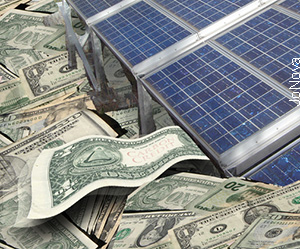Outback couple build solar farm to prove fringe-of-grid power generation needs
 Building a $14 million solar farm is an expensive way to send a message about electricity prices, but Doug and Lyn Scouller said they were left with few options.
Building a $14 million solar farm is an expensive way to send a message about electricity prices, but Doug and Lyn Scouller said they were left with few options.
In Normanton, 500 kilometres north of Mount Isa in north-west Queensland, the Scoullers built a solar farm big enough to power an area almost twice the size of Tasmania, in a move to prove to stakeholders the benefit of positioning power generation sites at the end of the grid.
In old fashioned terms, the “farm” produces five-megawatts. But yesterday, Tasmania didn’t use 5MW it used 1,072 MegaWatts. So this solar farm would have supplied 0.2% of the houses and businesses on an area “twice the size of Tasmania”. The only Tasmania-sized-areas that would be functioning on 5MW are in the empty desert or the Great Southern Ocean.
And we wonder why some Australians think solar power is a no brainer. If this little farm can supply 120,000 km2, we just need another 60 like it, and we could do the whole continent!
ABC journalists are not good with numbers. If only they had a billion dollars a year perhaps they could afford a specialized science team that understood that units of electricity are not reported in square kilometers. Oh wait…
By the way, the farm cost $14m dollars (plus another million to connect to the grid). To actually power Tasmania this way would cost $3 billion dollars ( and that’s if we pretend that there are no losses in cables from far north Queensland and batteries are free).
That’s a serious subsidy:
In 2016, the Normanton Solar Farm received an $8.5 million grant from The Australian Renewable Energy Agency (AREA), and is now being used as a test case to generate data about fringe-of-grid energy investment.
The Scoullers expect it will take “eight years to secure a return”. The Australian Taxpayer, on the other hand, expects nothing…
At least one engineer thinks that having a remote generator may increase the losses:
Greg Elkins, the Ergon Energy engineer who led the commissioning, said his preliminary research showed that end-of-line power generation might increase the transmission loss.
“The requirement of very long transmission lines means that there are a lot of losses in just having the line turned on,” Mr Elkins said.
“Putting energy at the remote end can actually cause that amount of [required] power flow to have the line online … to increase.
H/t David B.